A brief history of Austin, Texas
In 1839, the independent Republic of Texas chose a tiny village named Waterloo, located on a remote stretch of land near the Colorado River as its permanent capital. Renamed in honor of Stephen F. Austin, the decision to make this small isolated community the cornerstone of Texas caused a great amount of controversy. Fearing that it would be vulnerable to attack by both Indian tribes and a Mexican Army that Texans were still battling against, many prominent power brokers including Sam Houston argued strongly against the choice of Austin as the capital.
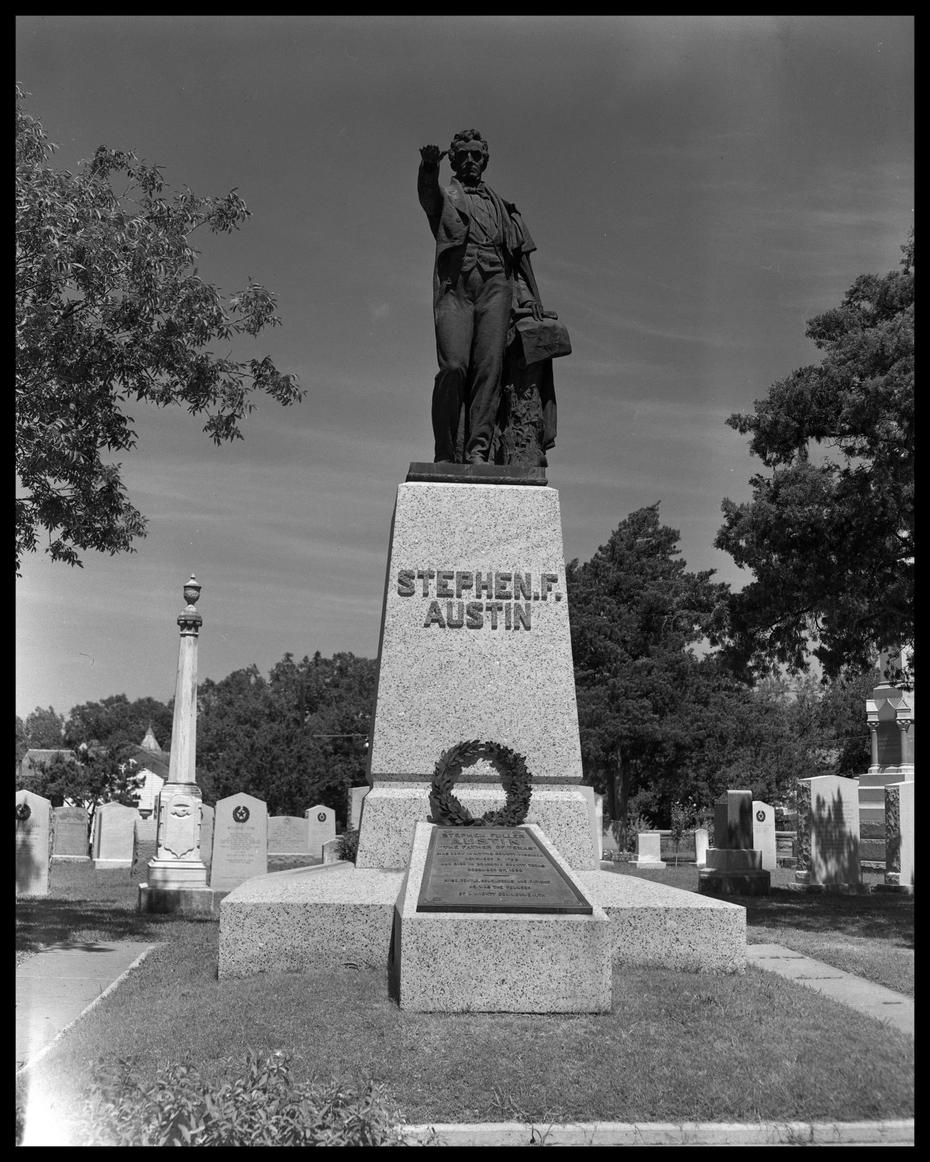
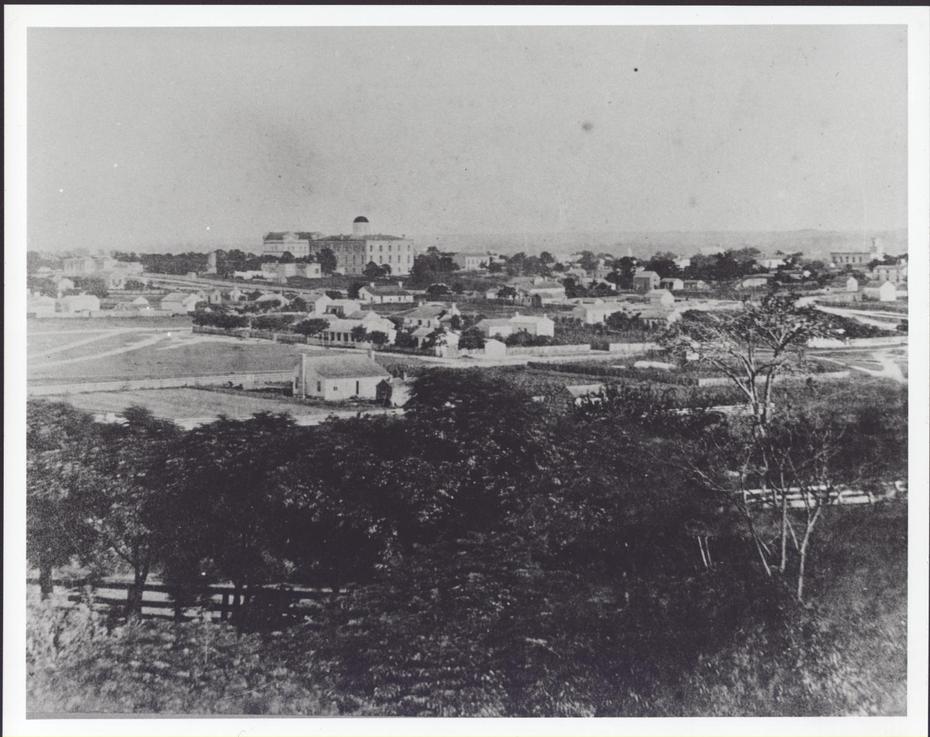
(Left) The grave of Stephen F. Austin, the "Father of Texas" whom the city is named after. (Right) A photograph of Austin, Texas in 1871. Credit: Texas History Portal. (click to enlarge both)
After a three-year interlude, which saw the capital move temporarily to Houston, Austin reclaimed the title in 1846 and saw three different nations govern its people in a span of less than twenty years: the Republic of Texas, the United States, and the Confederacy.
Following the Civil War, Reconstruction gave Austinites their first real taste of economic prosperity. Marking the start of a new era, the Houston and Texas Central Railway awarded the town its first railroad connection in 1871, making Austin an important hub for trade and commerce in the Lone Star State. And with this development, the population more than doubled as new and more modern buildings were being erected throughout the booming capital.
Of all these new structures, one in particular emerged as the city’s most iconic building. The Texas State Capitol, with its Italian Renaissance Revival architecture has dominated the Austin skyline ever since its completion in 1888. At over 300 feet, it stands taller than its Washington DC counterpart, symbolizing the integral role state government plays in the city’s economy.
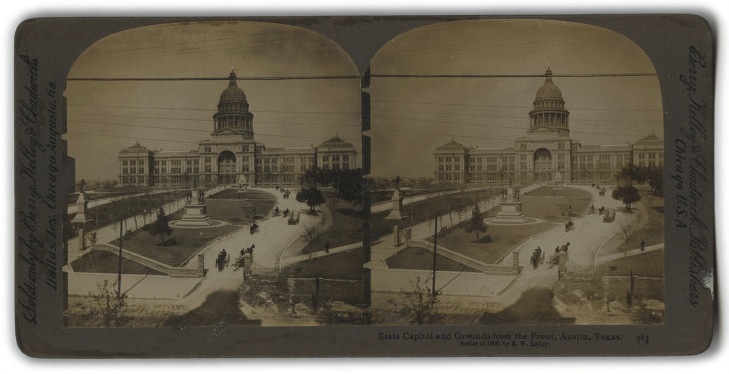 A stereoscopic photograph of the State Capitol and Grounds, circa 1906.
A stereoscopic photograph of the State Capitol and Grounds, circa 1906.
Credit:
During that same decade, Austinites saw their collective fortunes rise with the creation of the University of Texas (later the University of Texas at Austin). With the first classes beginning in 1883, the school attracted the best and brightest from around the state. And with completion of the Main Building – also known as “The Tower” – in 1937, Austin received its second most recognizable landmark.
Having a first-class university, Austin now became home to a highly educated workforce, which served as a magnet to employers from across the country. With its knowledgeable population, numerous Fortune 500 companies such as Texas Instruments, Dell, IBM, Apple, Google, eBay and Intel have all established offices in the city, turning Austin into the Silicon Valley of the South.
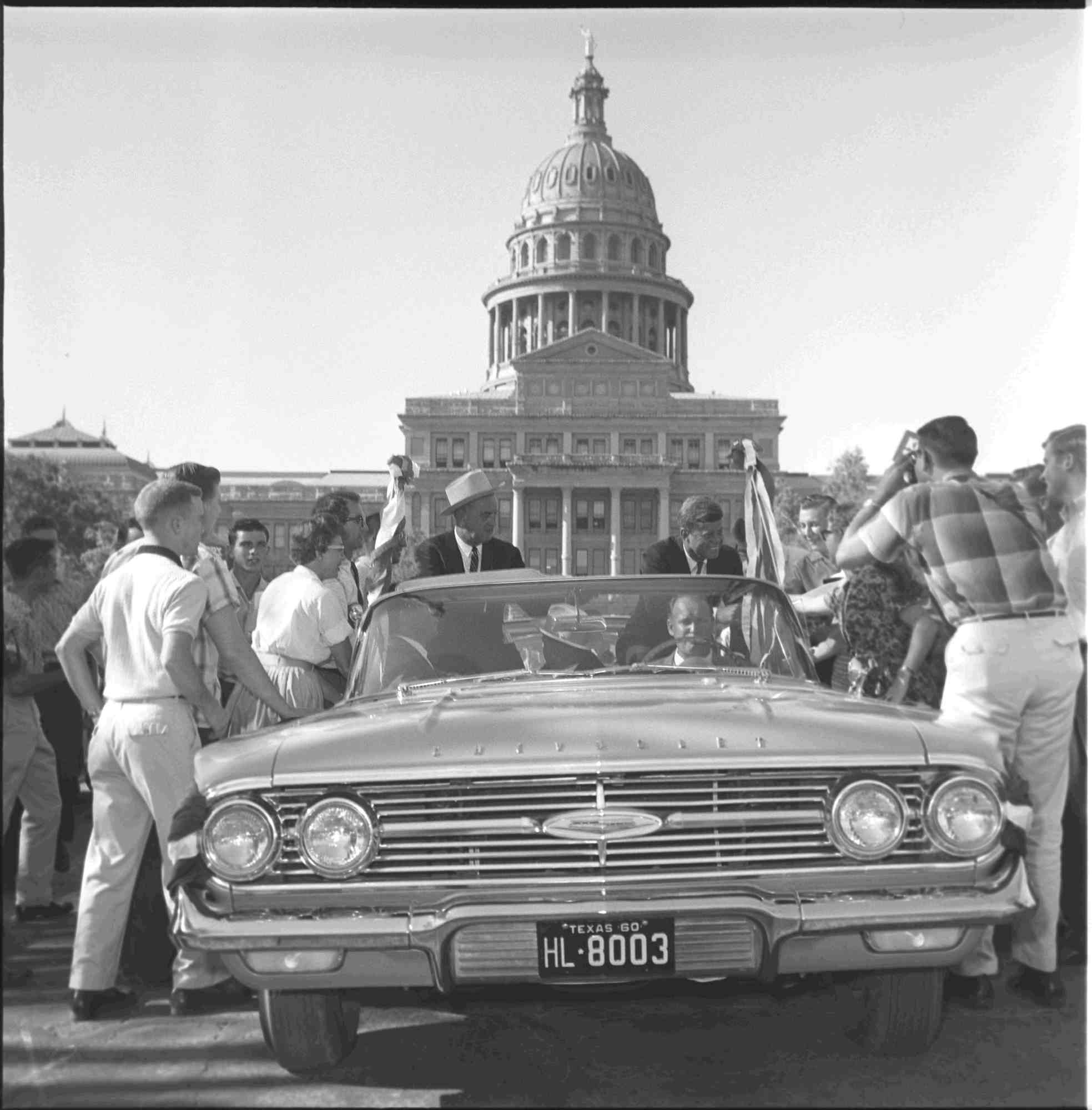 |
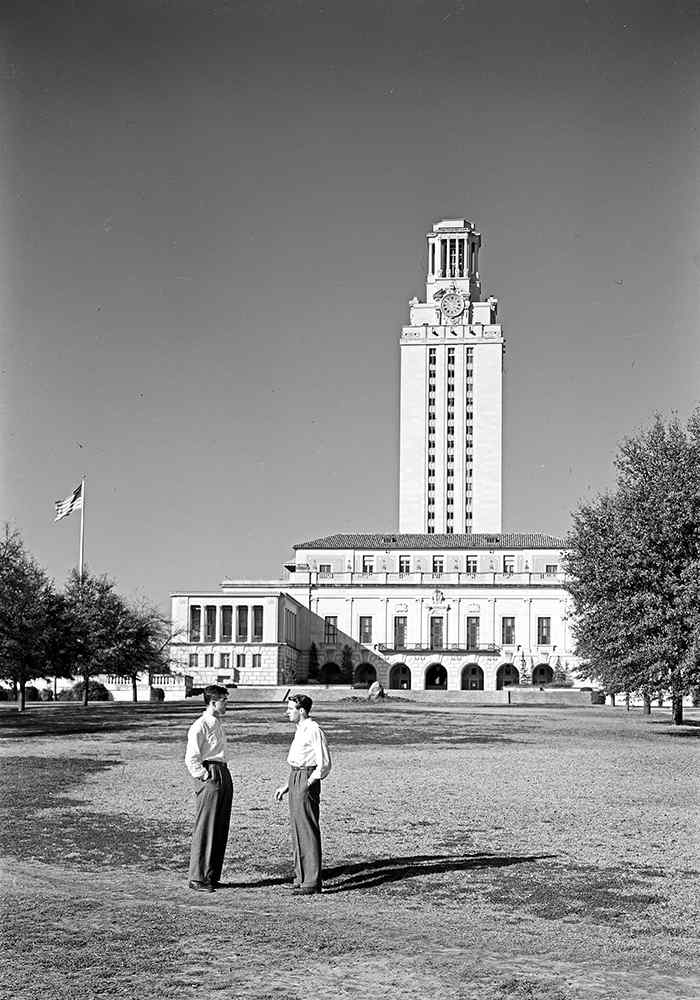 |
(Left) Senators John Kennedy and Lyndon Johnson campaigning for the presidency in 1960. Credit: Lyndon Baines Johnson Presidential Library. (Right) , 1949. Credit: . (click to enlarge both)
Of course, the capital’s unique relationship with Lyndon Baines Johnson, arguably the most powerful and successful politician of the twentieth century paid off enormous dividends. The first major benefit came in 1941 with the completion of the Marshall Ford Dam (later renamed the Mansfield Dam), which generated hydroelectricity from the Colorado River to the people of Austin. A year later saw the first planes fly out of Bergstrom Air Force Base, which for nearly fifty years remained a vital part of the Strategic Air Command (SAC).
With a history and culture that differed from most southern cities and towns, the doctrine of massive resistance against the civil rights movement following the landmark case of Brown vs. Board of Education never took much shape in Austin. In fact, the first African-American students were admitted to UT Austin in 1956 without any violent incidents.
Fast forward to today and that same progressive spirit is alive and well on the streets of Austin. With its unofficial slogan "Keep Austin Weird," locally owned businesses are allowed to flourish while both locals and tourists continue to flock to Sixth Street for some outstanding dining and entertainment. And of course, you can't leave out the city's world famous music scene where live acts continue the legacy forged by unforgetable shows like Austin City Limits.
At the Austin Branch of the International Wine & Food Society, we all raise our glasses in salute of this oustanding city that forged its own unique path!